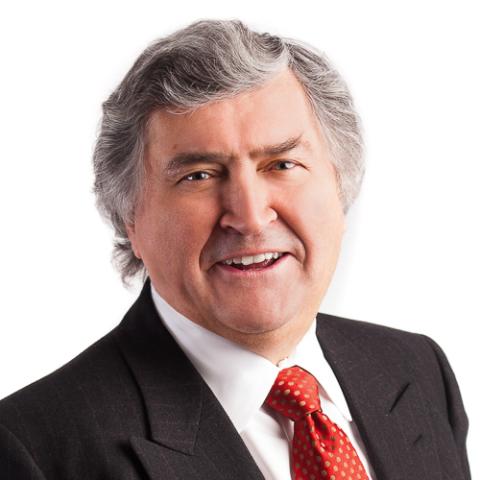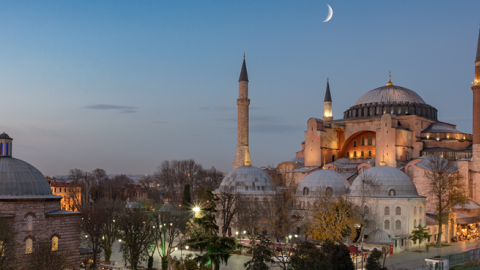p(firstLetter). In the West and elsewhere, views of Islam are sharply divided. To put the matter far too simply, one side describes Islam as a “religion of peace,” while the other contends that it is particularly disposed to violence. Similar strife occurs in debates about law, democracy, religious freedom, and other human rights in the Muslim-majority world. In Religious Freedom in Islam: The Fate of a Universal Human Right in the Muslim World Today, Daniel Philpott avoids inflammatory labels like “Islamophobic,” instead framing the debate as a contest between “Islamopluralists” and “Islamoskeptics.”
Philpott, one of the world’s leading scholars of religion and politics (and especially of religious freedom), hopes that even if these arguments cannot be resolved, they can at least be engaged more fruitfully. He believes that much of the debate can be best addressed through asking, “Is Islam receptive to religious freedom?”
To answer this question, he gives a broad overview of the empirical, historical, and theological issues at stake, and he does so judiciously.
A Bleak Portrait
Philpott’s desire for even-handedness does not lead him to downplay the major troubles in the contemporary Muslim-majority world. While acknowledging that no religion, or non-religious movement, has a monopoly on repression and violence, he argues that these vices are now most prevalent within Islamic societies.
He puts the matter starkly: “My own research found that in 2007, 91% of all terrorist groups in the world proclaimed a radical Islamic message. Political scientist Monica Toft finds that today about three-quarters of the world’s civil wars that are fought over religious issues involve at least one Muslim [side].” Furthermore, “since the end of the Cold War, 71% of these wars have involved a Muslim-dominated government and predominantly Muslim rebel groups; and that Islamist rebels are implicated in all 14 instances of this kind of war that have broken out since 2000.” And finally, “[W]hereas half of the world’s countries are electoral democracies, only a fifth of Muslim-majority countries are electoral democracies.”
This grim picture continues when we focus on religious freedom. As Philpott notes, “From a satellite view, the landscape of Muslim-majority states favors the Islamoskeptics. Of 47 Muslim-majority states, 36, more than three quarters, have strong restrictions on religious freedom. Taken as a whole, the set of Muslim-majority states is far less religiously free than the global average or the set of Christian-majority countries.” He concludes as follows: “Taken as a whole, at the present moment, the Muslim-majority world is less free and more violent than the rest of the world.”
Having sketched this bleak portrait, Philpott next examines the religious freedom situation more closely and notes the many complexities involved. Over half of the book is devoted to a detailed analysis of the travails of religious freedom in the Islamic world. The key takeaway is that, despite undeniably troubling tendencies, all is not as grim as it first appears, and there are plausible paths to improvement.
Only 11 of the world’s 47 Muslim-majority states (the total number is disputed) have high levels of religious freedom. However, of the other 36, writes Philpott, “some 42% … are governed not by a radical form of Islam but by an aggressive form of secularism imported from the West.” He classifies the remaining 19 as both religiously restrictive and Islamist, which means they are “governed by a regime that deploys highly restrictive laws and policies to promote” some purportedly traditional form of Islam. This is a distressingly high number, but it is still a minority—approximately two-fifths of the Muslim world—and this provides some grounds for hope.
Beyond this careful survey, Philpott addresses two other important matters. First, he provides a ringing defense of religious freedom. Along with an increasing number of scholars, he argues that apart from its own inherent worth, it provides an indispensable foundation for a host of rights, freedoms, and other social goods “now lacking in the Muslim world.” This makes the discussion surrounding religious freedom a highly revealing window into the fundamental issues at stake. “More than democracy or tolerance,” Philpott writes, “religious freedom expresses what is in dispute in the West’s public debate over Islam.”
In taking this stance, Philpott enters what he calls the “growing public row” over religious freedom in the West. What was once taken for granted as a clear blessing has now become enmeshed in our culture wars and is under attack both practically and conceptually. Philpott’s adversaries include “new atheists” like Richard Dawkins, Sam Harris, and Daniel Dennett, as well as a growing number of scholars who deny that religious freedom—or even religion itself—has any coherent definition. Many of these critics treat religious freedom as a form of pernicious Protestant individualism that imperialist Westerners want to impose on others. Philpott effectively contends that their arguments are often divorced from any serious analysis of the history of religious freedom or its condition in the contemporary world.
In response to these critics, Philpott gives helpful definitions of religion and religious freedom. Religion, he writes, can be seen as “an interconnected set of beliefs and practices through which people answer the grand questions of life by seeking to live in harmony with a superhuman power that intervenes in real circumstances in their life. They do this most characteristically through worship.” Defined in this fashion, religion appears as something distinct from nationalism, environmentalism, and other quasi-religious ideologies.
In sum, writes Philpott, “if religion is of the highest importance to humans and their flourishing and if the authentic practice of religion must be free, then it would be manifestly unjust to coerce, prevent, interfere, or unduly restrict it and manifestly just to protect it with the force of law. In brief, this is the argument for religious freedom.”
Drawing on Islam
Philpott makes a second important contribution by surveying possible sources for a defense of religious freedom within Islam, although in trying to cover so much ground, his discussion here becomes thin and abridged. He suggests seven such sources, including exegesis of Islam’s sacred texts and the history of Muslim treatment of religious minorities. He spends more time discussing “Liberal Islam,” not only among contemporary Muslim intellectuals but over the last two centuries, and reviews contemporary Muslim regimes and the state of Islamic public opinion. This effort to draw on Islam itself is key since, in the contemporary Muslim world, arguments for religious freedom are unlikely to have much traction unless they are seen as issuing from (or at least compatible with) the dominant faith.
Finally, Philpott suggests a possible way forward, drawing on the history of the Catholic church. The church, he writes, “contained early seeds of a teaching of religious freedom, denied religious freedom in the political realm for many centuries, eventually came to espouse religious freedom definitively, and did so compatibly with its own enduring teachings.” Each of these four elements is important, especially his affirmation that, although Christians engaged in repression, the seeds of religious freedom were present in Christianity from the beginning. This has meant that, in the present age, most Christians see religious freedom not as an external imposition on the faith from the Enlightenment, which was often hostile to religious freedom, but as something growing organically from the gospel.
The book closes with a set of recommendations, the heart of which is the suggestion that the “best way to realize religious freedom is to expand the sphere of people who are persuaded by the principle.” With Religious Freedom in Islam, Philpott has done his part to grow the ranks of the persuaded.



















